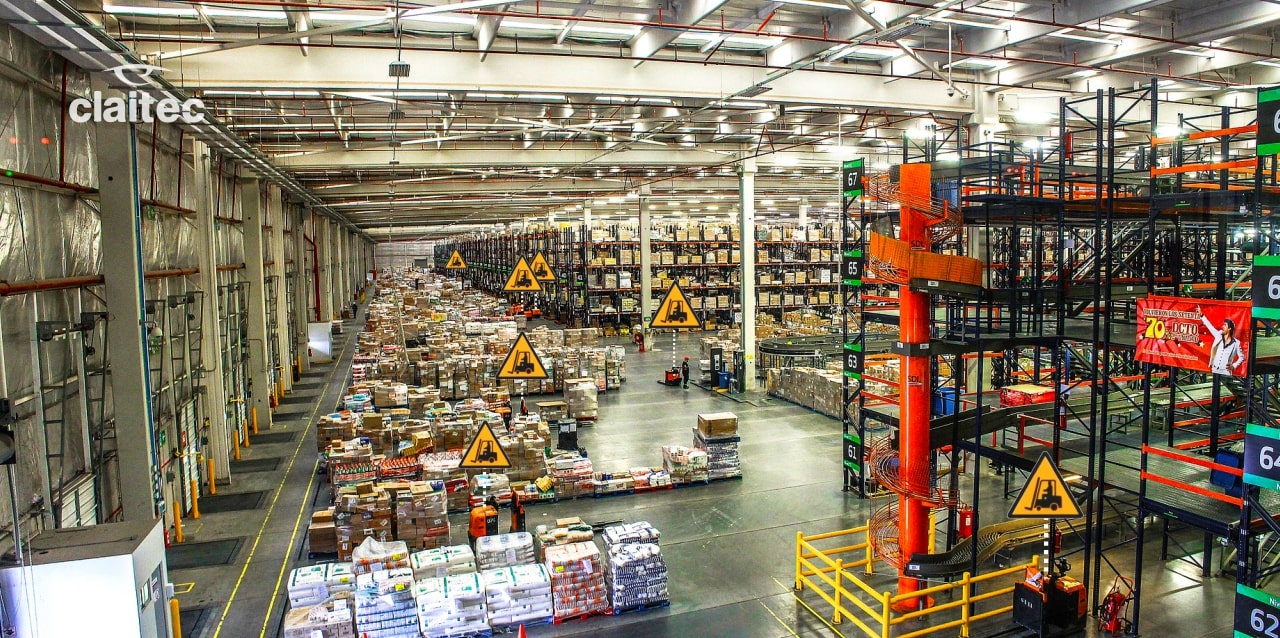
In the last few days, several news items reported the boom currently being experienced by the logistics sector, with investments exceeding 2,400 million euros.
In this post, we would like to expand on the nature of this golden moment and emphasise the need for it to be accompanied by a proper development of safety systems for workspaces to prevent accidents.
According to an article written by the Spanish newspaper ABC, the investment in logistics’ real estate in the last year skyrocketed to 2,400 million euros – a growth of 20% between March 2018 and March 2019 – exceeding the seven million square meters contracted throughout Spain (data from a report by Solvia).
What’s currently happening is that both large areas on the outskirts of major cities, as well as small spaces in urban centres have now become of special interest to investors. Electronic commerce is given special protagonism in this report highlighting the key role it’s playing in the growth of logistics warehousing in Spain.
Given this accelerated growth and the appearance of new logistics and industrial spaces, it is essential to remember the importance of having the appropriate occupational safety and accident prevention systems in place.
If the need to ensure safe workspaces is taken into account from the initial design and assembly stages, our workplaces will be much safer and more efficient. This will allow us to implement all the recommendations that give priority to the provision of safety and occupational health measures.
Our website is a great source of information about all Claitec’s products designed with this aim in mind.
The following systems are a great starting point:
The Pedestrian Crossing Safety system (PCS) minimises the risk of accidents caused by the interaction between forklifts and pedestrians. This solution warns the drivers – by means of traffic lights – that pedestrians are crossing a certain junction or area. Pedestrians carry tags that emit light signals when an activator detects them. Next, the traffic light indicates the presence of pedestrians.
We can also recommend implementing the Narrow Aisle Solution (NAS). When incorporated in the initial stages of a logistic warehouse, this system can provide safety in narrow corridors, and minimise risks and collisions between forklifts in areas where manoeuvring space is limited.
When installing this system, the forklifts incorporate reflective coded bands that activate the traffic lights placed in the corridors when detected by the sensors. From that moment, and while the forklift remains in the corridor, the traffic light will indicate its presence in the area to the rest of the vehicles or pedestrians approaching.
Finally, and among many other possible support systems to logistics areas, we’d like to mention the Blind Spot (BS) Solution. Designed for areas without visibility (with blind spots), the BS Solution minimises the risk of pedestrians being overrun by forklifts and collisions between forklifts in areas of limited visibility.
The traffic light in this system indicate who has the right of way – whether drivers or pedestrians. Both pedestrians and forklifts wear tags that emit light signals when an activator detects them. Subsequently, the traffic light indicates the preference of passage.
Can we help you resolve any doubts?
Please let us know if you have a specific query or whether you’d like more information about any of our solutions.
We’d be very glad to assist you!
